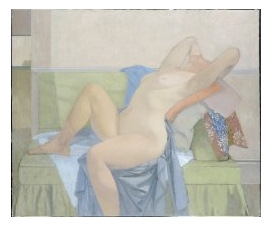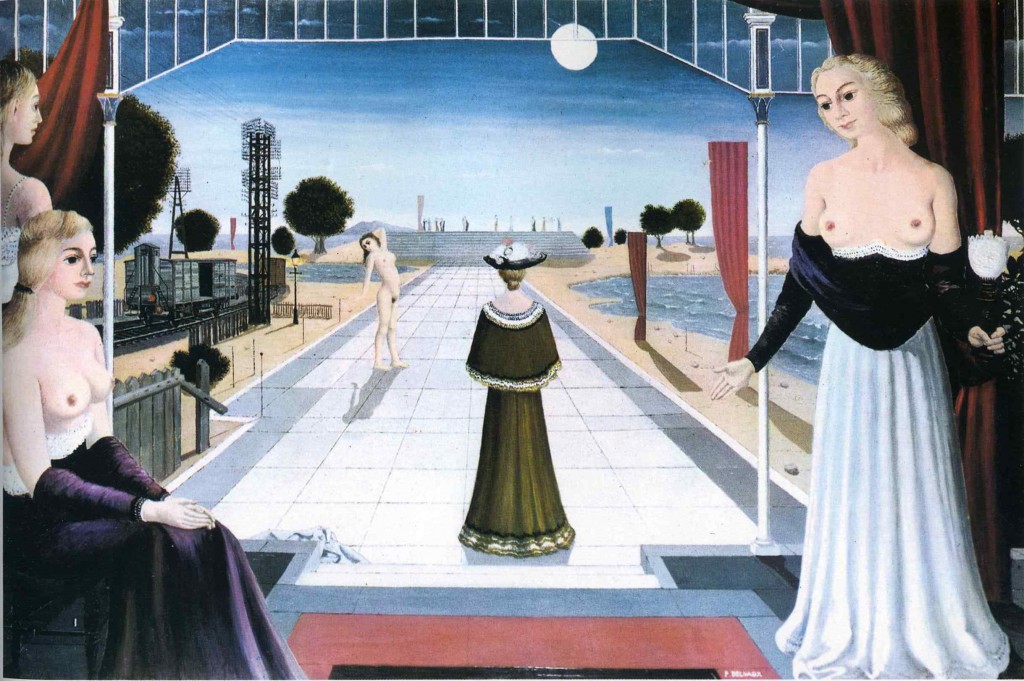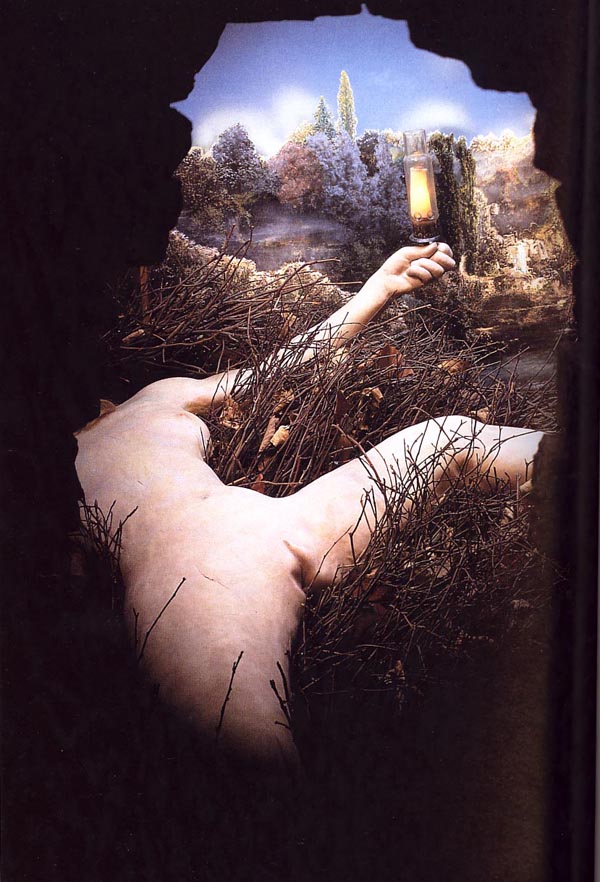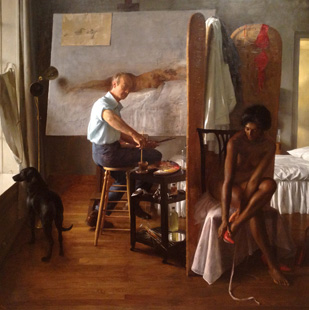The persistence of the nude. We have had more or less traditional treatment since Marcel Duchamp, followed by Picasso and abstract expressionism rendered her to the scrapheap of history. Lo and behold, she could not be avoided for long. It might be something intrinsic to modernism itself, Shiller’s “the withdrawal of the world” and out of the hustle, bustle, individualism and enterprise from the people channeled their energies after the Protestant reformation. The anti-Enlightenment, not extreme, but a realization of the impossibility of constructing a credible and meaningful narrative of our lives. Modernism always posits a disrupted momentum, as Baudelaire first perceived in the new urban setting, the Paris arcades, we wold always be breaking from tradition and then self-consciously drawing on the same; the love hate dynamic of a D.H. Lawrence, where modernism is more than a style, more like variations on the long arc of anguished repudiations.

—In Duchamp, sublimation of the unconscious drives of European culture takes place early on, entirely realized in the 1912 Bride. The boyish curiosity about “what’s inside a girl” has become the intellectual questioning of the scientist. Transfiguration of raw feeling into dispassionate exploration is evident from the style. Duchamp noted his
. . . replacing the freehand by a very precise technique. . .
Duchamp’s Bride is indeed a factory girl. The equation of machine action, pumping pistons and all that, with sex, was a commonplace in literature from the 1880’s on, and was taken up in painting in the early twentieth century. But Duchamp’s work is not the simple confusion of relentless metal motion with sexual sadism. It is rather a scientist’s admiration of the superb engine that is the body which prompted what he called
. . . the juxtaposition of mechanical elements and visceral forms.
Read More:http://www.invisiblebooks.com/Duchamp.htm
In this disenchanted world,our new natural habitat, the culture of dissent, it became apparent to the likes of a Picasso or Matisse and later the Jackson Pollock’s, that it would be meaningless and fraudulent to paint in traditional ways, as though nothing had changed; no technology, no mechanical reproduction of the arts. Commerce, consumerism and secularism had mortally disrupted the old human narrative with these inescapable blasts of nihilism.It would be phony to pretend otherwise. Maybe not in the Vatican or for the old men wailing in the synagogue, but the world at large could not escape these new fractures in the foundation and the rays of light filtering through were affecting the world and the self.
In coming out of the rubble of abstract expressionism, after American hegemony had made it a cultural weapon of mass sums of destructions and diluted and neutered its psychic early surge that could not be maintained, there began something of a re-emergence of the traditional treatment. Above, on the “more” end of the scale , John Koch’s Studio, offers a simultaneous inspection of the model , a preliminary drawing and half finished painting, all combined within a completed painting: a one picture demonstration of how respectfully the nude had been treated in some quarters while being knocked about and abused in others.

Lennart Anderson. Large Reclining Nude, 1963. Read More:http://www.mutualart.com/Artwork/Reclining-Nude/8CEC94D0465FB4EA
On another tack, less similar to Koch’s than it seems at first glance, Lennart Anderson uses the nude as a complicated natural structure to be organized into masses and balances that are more abstract than realistic or sensuous. But the nude in anything like normal proportions is never totally abstract, and Paul Delvaux’s paintings says right out that “nude” and “sex” are synonymous to a large degree, a fact of life and art that surrealism, alone among twentieth-century art movements, had made the most of.

Paul Delvaux. Read More:http://aviemet.divitu.com/pictures/Surrealism%20Painting/Paintings/Paul%20Delvaux/
ADDENDUM:
(see link at end)…The same sense of enquiring amazement is the theme of the final work, Etant Donnés, whose literal peep-show holds a paradisal reward for those bold enough to peer into the unmarked apertures. A nearly cliché garden of Eden, plants, water, naked Eve and all, illuminated by the gas-lamp that was (in nineteenth century Paris) the ultimate emblem of scientific progress.
 06" />
06" />Read More:http://www.invisiblebooks.com/Duchamp.htm
There are of course a few sharp, disorienting turns thrown in to be sure that the viewer, if he comes to the right conclusion, arrives there giddy. The medieval-looking door, heavy and dilapidated as European art tradition, yet aesthetically neutral as a readymade. The female figure whose slightly displaced genitalia evade the pornographic pleasures of realism by the virtual fig-leaf of deformity. The bed of twigs is there to make the spectator uncomfortable. The whole composition is a sendup on the order of Euripides’ Bacchae. It parodies the aesthetic ideals cherished from the Renaissance on. (Women are beautiful. Painting should be beautiful. The most beautiful painting should show a beautiful woman.) At the same time it makes fun of the aesthetic dogmas of the twentieth century. (The world is ugly. Painting should be ugly. The most meaningful painting should show a hideous woman.) Read More:http://www.invisiblebooks.com/Duchamp.htm






 COMMENTS
COMMENTS